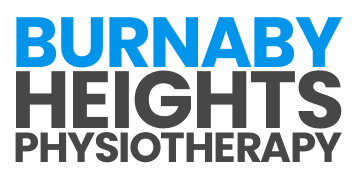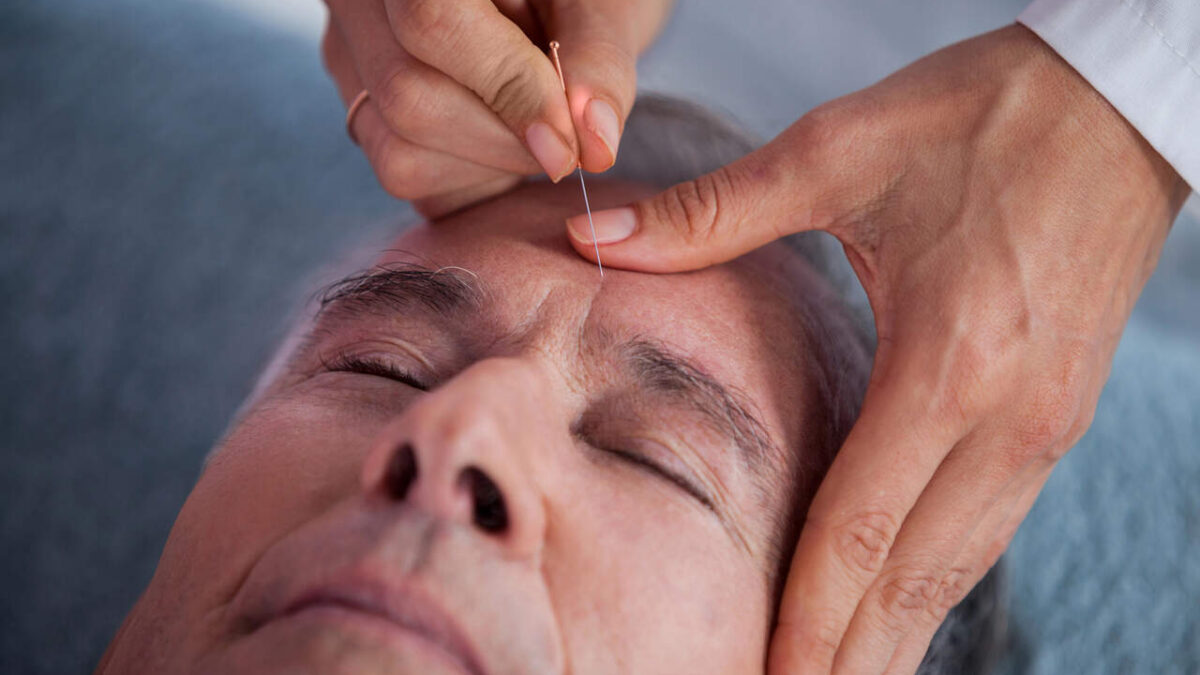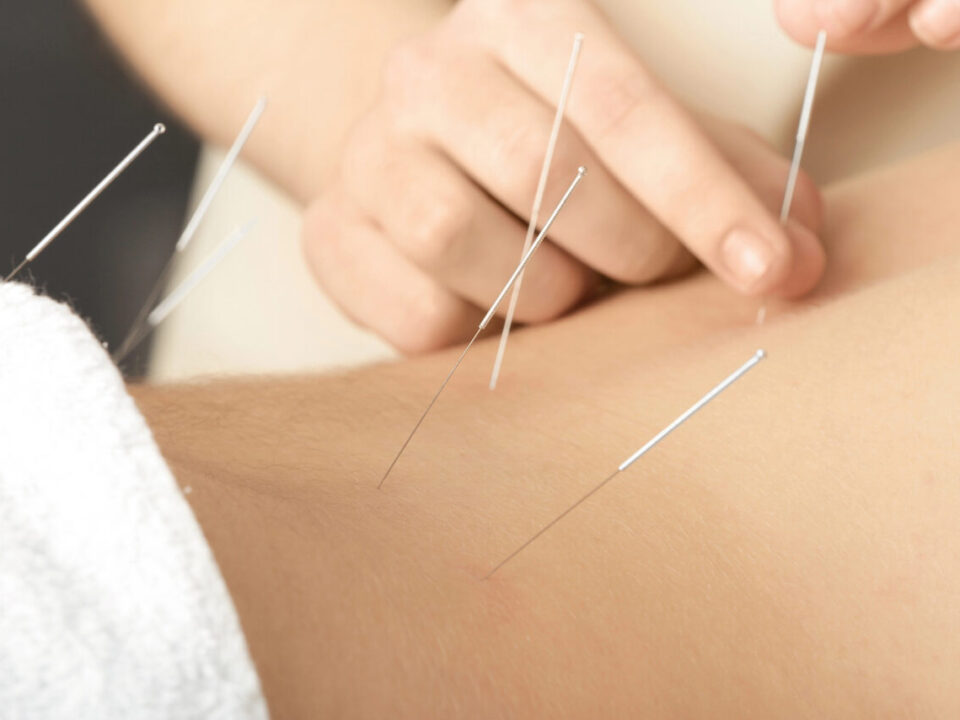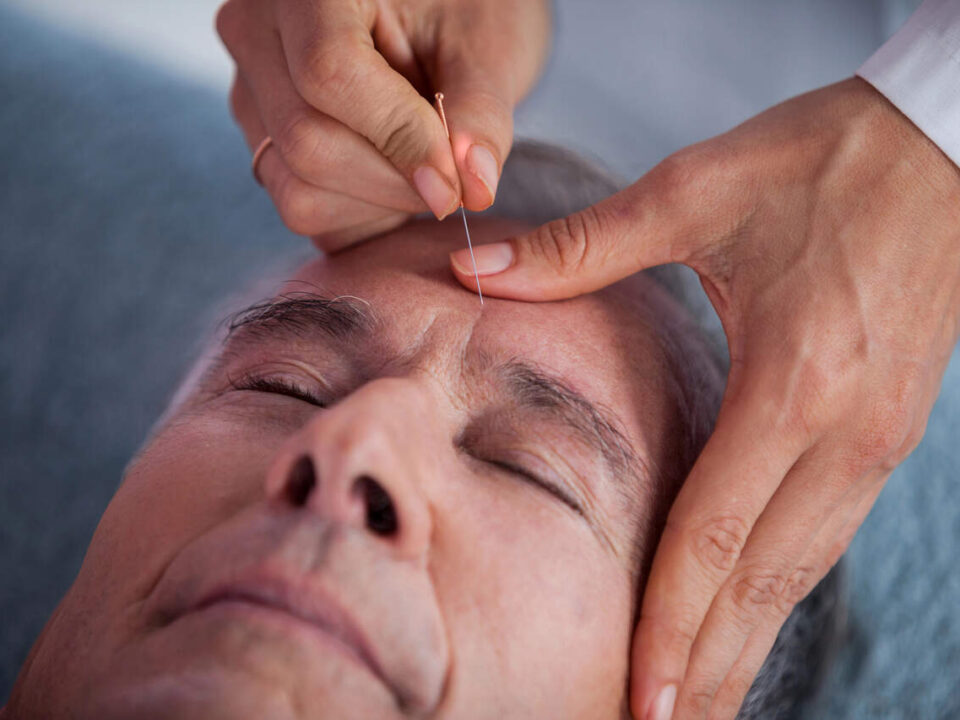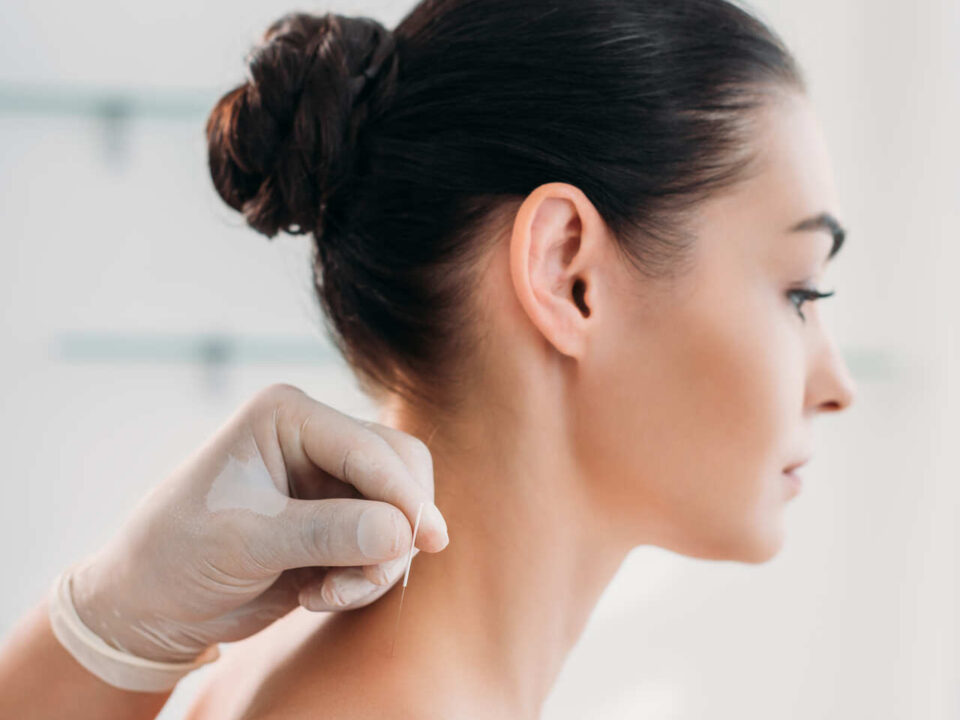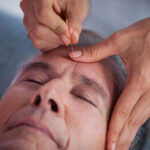
Easing the Burden: Exploring Acupuncture as a Migraine Treatment
July 18, 2024
Shoulder Pain Management: The Role of Acupuncture
July 24, 2024Exploring Acupuncture for Headaches
Introduction to Acupuncture for Pain Relief
Acupuncture, a traditional Chinese medicine practice, has been used for centuries to address various forms of pain, including headaches. By inserting thin needles into specific points on the body, acupuncture aims to restore balance and promote natural healing. As we explore the effectiveness of acupuncture for headaches, it’s essential to understand its broader application in pain relief.
Acupuncture has shown promise in treating several conditions, such as acupuncture for migraines and acupuncture for neck pain. The practice is based on the concept of Qi (pronounced “chee”), the vital energy that flows through the body’s meridians. Disruptions in this energy flow are believed to cause pain and illness.
How Acupuncture Works for Headaches
Acupuncture works by stimulating specific points on the body, known as acupoints. These points are strategically located along the meridians and are thought to correspond to different organs and systems. When needles are inserted into these acupoints, they help to regulate the flow of Qi, alleviate pain, and promote overall well-being.
For headaches, acupuncture targets acupoints that are believed to relieve tension, reduce inflammation, and improve blood circulation. Commonly used acupoints for headache relief include:
- LI4 (Hegu): Located between the thumb and index finger, this point is often used for pain relief and stress reduction.
- GB20 (Fengchi): Found at the base of the skull, this point helps alleviate headaches and neck tension.
- ST8 (Touwei): Situated at the corner of the forehead, this point is used for frontal headaches.
Acupuncture is also known to trigger the release of endorphins, the body’s natural painkillers, which further helps in managing headache pain. Research has shown that acupuncture can be an effective treatment for various types of headaches, including tension headaches and migraines.
| Headache Type | Acupoints Commonly Used | Benefits |
|---|---|---|
| Tension Headaches | LI4, GB20, ST8 | Pain relief, reduced tension |
| Migraines | LI4, GB20, ST8 | Decreased frequency, reduced severity |
| Cluster Headaches | LI4, GB20 | Alleviated pain, improved circulation |
Understanding how acupuncture works for headaches can help us make informed decisions about incorporating it into our pain management routine. For those seeking a natural and holistic approach to pain relief, acupuncture offers a promising solution. Explore more about the benefits of acupuncture and how it can be integrated with conventional treatments for optimal results.
Benefits of Acupuncture for Headaches
Acupuncture offers several advantages for those experiencing headaches. By targeting specific points on the body, we can address not only the symptoms but also the underlying causes of headaches.
Pain Management
One of the primary benefits of acupuncture is its effectiveness in pain management. By stimulating specific points on the body, acupuncture can help alleviate the pain associated with headaches. This process involves the release of endorphins, which are natural painkillers produced by our bodies. Additionally, acupuncture can help regulate the flow of energy, or “Qi,” which may be disrupted in individuals suffering from headaches.
| Benefit | Description |
|---|---|
| Pain Relief | Release of endorphins |
| Energy Balance | Regulation of Qi flow |
| Muscle Relaxation | Reduction of tension in muscles |
For more information on how acupuncture assists in pain relief, visit our page on acupuncture benefits.
Stress Reduction
Stress is a common trigger for headaches. Acupuncture can be an effective tool for reducing stress levels, which in turn can help prevent headaches from occurring. By targeting specific points associated with stress and anxiety, acupuncture can promote relaxation and a sense of well-being. This holistic approach not only addresses the headache but also improves overall mental health.
| Benefit | Description |
|---|---|
| Reduced Anxiety | Stimulation of calming points |
| Enhanced Relaxation | Promotion of well-being |
| Lowered Stress Hormones | Reduction in cortisol levels |
Learn more about how acupuncture can help with stress-related conditions by visiting our article on acupuncture for sciatica.
Improved Blood Circulation
Improved blood circulation is another significant benefit of acupuncture for headaches. Poor circulation can contribute to the occurrence of headaches by restricting the flow of oxygen and nutrients to the brain. Acupuncture can help enhance blood flow, ensuring that the brain receives the necessary nutrients and oxygen. This improved circulation can alleviate headache symptoms and promote overall health.
| Benefit | Description |
|---|---|
| Enhanced Oxygen Supply | Improved delivery to the brain |
| Nutrient Distribution | Better nutrient flow |
| Reduced Inflammation | Decreased swelling in blood vessels |
For further insights into how acupuncture can improve circulation, check out our page on acupuncture for knee pain.
By incorporating acupuncture into our wellness routine, we can experience these benefits and achieve better management of headaches. Understanding the multifaceted advantages of acupuncture allows us to appreciate its role in holistic healthcare. For more detailed information on the benefits of acupuncture for various conditions, explore our articles on acupuncture for migraines and acupuncture for arthritis.
What to Expect During an Acupuncture Session
When considering acupuncture for headaches, understanding what to expect during a session can help alleviate any concerns and ensure a smooth experience. This section provides an overview of the initial consultation, the techniques used, and the typical duration and frequency of sessions.
Initial Consultation
During the initial consultation, the acupuncturist will conduct a thorough assessment to understand the patient’s medical history and specific headache symptoms. This assessment may include questions about the nature, frequency, and intensity of the headaches, as well as any potential triggers.
| Consultation Components | Description |
|---|---|
| Medical History | Review of past and current health conditions |
| Symptom Discussion | Detailed questions about headache characteristics |
| Physical Examination | Examination of pulse, tongue, and other diagnostic methods |
This initial evaluation helps the acupuncturist develop a personalized treatment plan tailored to the individual’s needs.
Acupuncture Techniques Used for Headaches
Acupuncture involves the insertion of thin needles into specific points on the body to stimulate energy flow and promote healing. For headaches, acupuncturists may use a variety of techniques, including:
- Traditional Needling: Insertion of needles at specific acupoints linked to headache relief.
- Electroacupuncture: Application of a mild electric current to the needles to enhance the therapeutic effect.
- Auricular Acupuncture: Targeting points on the ear that correspond to headache relief.
| Technique | Description |
|---|---|
| Traditional Needling | Standard insertion of needles |
| Electroacupuncture | Mild electric stimulation of needles |
| Auricular Acupuncture | Focusing on ear points |
These techniques aim to alleviate headache pain by balancing the body’s energy and improving blood circulation.
Duration and Frequency of Sessions
The duration and frequency of acupuncture sessions can vary based on the individual’s condition and response to treatment. Typically, an acupuncture session for headaches lasts between 30 to 60 minutes.
| Session Component | Duration |
|---|---|
| Initial Consultation | 60 minutes |
| Follow-up Sessions | 30-45 minutes |
The frequency of sessions may start with one to two times per week, gradually reducing as symptoms improve. Consistency is key to achieving long-term relief from headaches.
To learn more about the benefits of acupuncture and how it can be integrated with conventional treatments, explore our articles on acupuncture benefits and acupuncture for migraines.
Safety and Considerations
When considering acupuncture for headaches, it’s essential to understand the safety aspects and considerations involved in this treatment. This section will cover the qualifications of acupuncturists, potential side effects, and how acupuncture can be integrated with conventional treatments.
Qualifications of Acupuncturists
Ensuring that your acupuncturist is qualified is crucial for a safe and effective treatment. In the United States, acupuncturists must be licensed to practice. Here are some key qualifications to look for:
- Licensure: Verify that the acupuncturist is licensed by the state board.
- Certification: Look for certification from recognized bodies such as the National Certification Commission for Acupuncture and Oriental Medicine (NCCAOM).
- Education: Ensure the practitioner has completed a formal education program in acupuncture.
| Qualification | Description |
|---|---|
| Licensure | State-issued license to practice acupuncture |
| Certification | NCCAOM or other recognized certifications |
| Education | Formal education in acupuncture, typically a master’s degree |
Potential Side Effects
While acupuncture is generally considered safe, there are some potential side effects to be aware of. These side effects are usually mild and temporary but should be discussed with your acupuncturist before beginning treatment.
| Side Effect | Description |
|---|---|
| Soreness | Mild soreness at the needle insertion sites |
| Bruising | Minor bruising at the needle insertion sites |
| Fatigue | Temporary fatigue or drowsiness after the session |
| Dizziness | Feeling lightheaded immediately after treatment |
For more information on the benefits and safety of acupuncture, you can read our articles on acupuncture benefits and acupuncture for migraines.
Integration with Conventional Treatments
Acupuncture can be an effective complementary therapy to conventional headache treatments. It’s important to discuss your treatment plan with both your acupuncturist and primary healthcare provider to ensure that the therapies can be safely combined.
- Communication: Keep all healthcare providers informed about your acupuncture treatment.
- Medication: Discuss any medications you are taking to avoid potential interactions.
- Holistic Approach: Combine acupuncture with other treatments such as physical therapy, medication, or lifestyle changes for optimal results.
For those interested in how acupuncture can complement other treatments, check out our articles on acupuncture for back pain and acupuncture for neck pain.
By understanding the qualifications of acupuncturists, potential side effects, and how to integrate acupuncture with conventional treatments, we can make informed decisions about using acupuncture for headache relief.
Success Stories and Research
Patient Testimonials
Many individuals have found relief from headaches through the practice of acupuncture. Personal accounts provide valuable insights into the efficacy of this ancient therapy. Here are a few testimonials from patients who have incorporated acupuncture into their headache management routines:
- Jane D.: “After years of suffering from chronic migraines, I decided to try acupuncture. The results were remarkable. My headache frequency and intensity have decreased significantly.”
- Mark S.: “I was skeptical at first, but acupuncture has been a game-changer for my tension headaches. The sessions are relaxing, and I feel a noticeable improvement in my overall well-being.”
- Emily R.: “Acupuncture has been a holistic approach to managing my sinus headaches. Along with dietary changes and stress management, the treatments have made a huge difference.”
These testimonials highlight how acupuncture can be a beneficial part of a comprehensive headache treatment plan. For more information on the benefits of acupuncture, visit our section on acupuncture benefits.
Scientific Studies on Acupuncture for Headaches
Numerous scientific studies have examined the effectiveness of acupuncture in treating headaches. These studies provide a solid foundation for understanding how acupuncture can be integrated into headache management.
| Study | Year | Sample Size | Outcome |
|---|---|---|---|
| Vickers et al. | 2012 | 18,000+ | Significant reduction in headache frequency and intensity |
| Linde et al. | 2016 | 1,395 | Acupuncture more effective than no acupuncture and comparable to prophylactic drug treatment |
| Zhao et al. | 2017 | 249 | Long-term reduction in chronic tension-type headaches |
| Wang et al. | 2018 | 98 | Decreased migraine frequency and severity |
- Vickers et al. (2012): A meta-analysis involving over 18,000 participants found that acupuncture significantly reduced both the frequency and intensity of headaches compared to no acupuncture treatment.
- Linde et al. (2016): This study involving 1,395 patients concluded that acupuncture was more effective than no acupuncture and had similar efficacy to standard prophylactic drug treatments for headache prevention.
- Zhao et al. (2017): Research on chronic tension-type headaches demonstrated that acupuncture led to a long-term reduction in headache frequency.
- Wang et al. (2018): A study focusing on migraines revealed that acupuncture significantly decreased the frequency and severity of migraine attacks.
These studies illustrate the potential of acupuncture as an effective treatment for various types of headaches. For those interested in specific conditions such as acupuncture for migraines or acupuncture for neck pain, further research is available.
By examining both patient testimonials and scientific studies, we can see that acupuncture offers a promising alternative for headache relief. This blend of personal experience and empirical evidence supports the integration of acupuncture into holistic headache management strategies.
Incorporating Acupuncture into Your Wellness Routine
Integrating acupuncture into our daily wellness routine can enhance the overall effectiveness of the treatment for headaches. By making thoughtful lifestyle changes, adopting long-term management strategies, and finding a qualified acupuncturist, we can make the most out of acupuncture therapy.
Lifestyle Changes to Support Acupuncture Treatment
Supporting acupuncture treatment with specific lifestyle changes can amplify its benefits. Here are some key adjustments we can make:
- Diet: A balanced diet rich in fruits, vegetables, and whole grains can support our body’s natural healing processes.
- Hydration: Staying well-hydrated helps maintain optimal body functions, which can enhance the effects of acupuncture.
- Exercise: Regular physical activity, such as yoga or walking, can improve blood circulation and reduce stress, complementing acupuncture’s benefits.
- Sleep: Ensuring adequate sleep allows our body to repair and rejuvenate, making acupuncture more effective.
Long-Term Management Strategies
For long-lasting relief from headaches, we need to consider incorporating acupuncture as part of a comprehensive long-term management strategy. Here are some methods to consider:
- Regular Sessions: Consistency is key. Scheduling regular acupuncture sessions can help maintain the benefits and prevent the recurrence of headaches.
- Stress Management: Techniques such as deep breathing exercises, meditation, and mindfulness can help manage stress, which is often a trigger for headaches.
- Tracking Symptoms: Keeping a headache diary can help us identify patterns and triggers, allowing for a more targeted acupuncture treatment plan.
Finding a Qualified Acupuncturist
Finding a qualified acupuncturist is crucial for ensuring safe and effective treatment. Here are some tips on what to look for:
- Credentials: Check for proper certification and licensure. Acupuncturists should be licensed by the National Certification Commission for Acupuncture and Oriental Medicine (NCCAOM).
- Experience: Look for practitioners with experience in treating headaches specifically.
- Consultation: Schedule an initial consultation to discuss our symptoms and treatment goals.
To explore more about the benefits of acupuncture for various conditions, check out our articles on acupuncture for migraines, acupuncture for back pain, and acupuncture for arthritis.
By making these lifestyle adjustments, adopting long-term strategies, and finding a qualified practitioner, we can effectively incorporate acupuncture into our wellness routine for headache relief.


